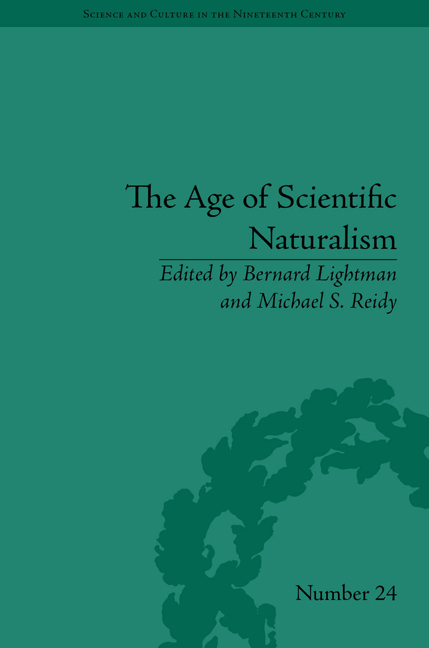Book contents
- Frontmatter
- CONTENTS
- Dedication
- Acknowledgements
- List of Contributors
- List of Figures
- Introduction: John Tyndall, Scientific Naturalism and Modes of Communication
- Part I John Tyndall
- 1 Saving the World in the Age of Entropy: John Tyndall and the Second Law of Thermodynamics
- 2 Getting Past the Greenhouse: John Tyndall and the Nineteenth-Century History of Climate Change
- 3 Tyndall, Lewes and Popular Representations of Scientific Authority in Victorian Britain
- Part II Scientific Naturalism
- Part III Communicating Science
- Notes
- Index
1 - Saving the World in the Age of Entropy: John Tyndall and the Second Law of Thermodynamics
from Part I - John Tyndall
- Frontmatter
- CONTENTS
- Dedication
- Acknowledgements
- List of Contributors
- List of Figures
- Introduction: John Tyndall, Scientific Naturalism and Modes of Communication
- Part I John Tyndall
- 1 Saving the World in the Age of Entropy: John Tyndall and the Second Law of Thermodynamics
- 2 Getting Past the Greenhouse: John Tyndall and the Nineteenth-Century History of Climate Change
- 3 Tyndall, Lewes and Popular Representations of Scientific Authority in Victorian Britain
- Part II Scientific Naturalism
- Part III Communicating Science
- Notes
- Index
Summary
In 1863, Victorian physicist John Tyndall published a series of twelve lectures on Heat, as a Mode of Motion, written for an educated, popular audience. Based on public presentations he had been holding at the Royal Institution of Great Britain since the late 1850s, this comprehensive work of several hundred pages discusses in detail the mechanical theory of heat, various instruments for measuring heat phenomena and numerous phenomena themselves. Yet for all its comprehensiveness, Tyndall's exposition contains a curious but significance absence. The science of heat, still new but rapidly becoming established, was based on two fundamental laws – the law of energy conservation and the entropy law, the first and second laws of thermodynamics. In Heat Tyndall focused on the conservation law. He described extensively the transformation of energy from one form into another, while emphasizing the continuous and cyclically balanced nature of the process. Energy circulated through the world changing forms, creating effects and producing technological and natural phenomena in an endless cycle of quantitatively equivalent transformations.
In 1863 the entropy law was still known as the dissipation law, but although it lacked a clear terminology, the effects and consequences of energy dissipation were attracting increasing scientific attention. They seemed to indicate that energy transformations had a direction and that, while the amount of energy in the world remained constant, the amount of transformable energy continuously diminished.
- Type
- Chapter
- Information
- The Age of Scientific NaturalismTyndall and his Contemporaries, pp. 15 - 32Publisher: Pickering & ChattoFirst published in: 2014



